Mages have always been compelling in the Dragon Age series; their connection to the fade grants them the great power of magic but at the cost of a horrible vulnerability to demonic possession. This has left mages with the conflicting status of being indispensably powerful and useful while also feared and persecuted. In terms of gameplay, the Dragon Age mage isn’t too far off from your standard fantasy fare - often clad in robes and wielding staves, bearing powerful elemental magics, they’re just a persecution complex, beard and point hat away from being traditional. Dragon Age: The Veilguard shakes things up a bit by introducing the orb and mageknife weapon combo, giving mages in this game a decidedly unconventional way to dispatch their foes. Since you can’t change your class once you exit character creation, having a basic understanding of your options might help you make an informed decision, and to that end, this page will discuss the mage’s weapons, playstyle, skills and specializations in Dragon Age: The Veilguard.
Page Breakdown¶
| Quick Search |
|---|
| The Mage’s Weapons |
| Staves |
| Orb and Mageknife |
| Ranged Beam |
| Generating and Using Mana |
| Mage Specializations |
| Death Caller Specialization |
| Evoker Specialization |
| Spellblade Specialization |
The Mage’s Weapons¶
As mentioned in the introductory paragraph, the mage has two different types of weapons at their disposal in Dragon Age: The Veilguard, the staff and the orb and mageknife. Like the warrior and their sword and board and two-handed weapon options, the mage has access to the staff and orb and mageknife combo. There’s no hard choice you need to make, you’ll equip all three weapons and can switch between them at any time by pressing the 
Staves¶
You’ll start out armed as a proper mage, wielding your staff and shooting magical bolts of energy from it. If you played Dragon Age: Inquisition you should be familiar with the basics of how this works - your standard light attack combo shoots out bolts of elemental energy, with the last attack in the combo shooting out multiple bolts. Light attacks can also be charged by holding down 

So far this is all rather striaght-forward, but the staff is a more versatile and nuanced weapon in Dragon Age: The Veilguard than it was in earlier Dragon Age games, as light attacks also build up staff charges and regenerate your mana. Staff charges are used to empower your heavy attack, (



While wielding a staff you can also block attacks by conjuring a barrier - just hold down the 

As far as specializations go, the Evoker is the game’s staff specialist, with passives like Knight of Staves being behind said specialization (which allows heavy attacks to append a light attack combo) and other passives that cause staff attacks to shoot additional projectiles and synergize with control and projectile skills. If you’re particularly fond of using the staff in combat, working your way up towards that end of the skill tree is probably your best bet.
(1 of 3) The staff’s light attack can be used to shoot bolts at distant enemies,
Orb and Mageknife¶
The Dragon Age games have usually had some kind of hybrid fighter/mage specialization - the Arcane Warrior in Dragon Age: Origins, or the Knight Enchanter in Dragon Age: Inquisition being examples, so it’s no surprise to see the Spellblade specialization in Dragon Age: The Veilguard. What is a bit odd is kitting mage Rooks out with the orb and mageknife as an alternative to the familiar staff. These weapons case Rook in a decidedly more roguish light, and ensure that mages aren’t restricted to slow, ranged combat if they don’t want to be.
The orb and mageknife are pair of weapons meant to be used in tandem, with the orb recovering mana (like the light attacks for the staff) and building Arcane Bomb stacks on enemies, while the mageknife deals more damage and detonates an accumulated Arcane Bomb if the enemy is unfortunate enough to be afflicted with one. At the start of the game it’ll take three orb strikes to build up an Arcane Bomb charge, making a methodical light-light-light-heavy combo your standard fare. Since Arcane Bombs can be built up and saved, however, you’re certainly free to dodge, block or use skills amidst combos, triggering Arcane Bombs when it’s safe or convenient. The orb is a mid range weapon that deals moderate damage and the mageknife is… well, a fine enough attack on its own, but something of a waste if it’s not triggering an Arcane Bomb.
If you charge the mageknife by holding down 

As downsides, you do need to get closer to enemies with the orb and mageknfie, and if you’re not triggering Arcane Bombs, you won’t be dealing much damage. The orb and mageknife also don’t have much in the way of AoE like the staff’s charge attack has, although upgrades can change that, as can the use of skills - the one time you might feel the need to rely on them instead of just spamming arcane bombs. You also cannot absorb damage as easily with the orb and mageknife - blocking won’t conjure a barrier, it’ll just cause you to enter a brief parry animation. If your timing is off you’ll take a hit - not an issue with the staff - but on the other hand if you perform a perfect parry you’ll knock the enemy back and leave them vulnerable. The orb and mageknife is geared for ARPG aficionados who want their mage to take a more active role in combat.
The Spellblade is the uncontested master of the orb and knife, and the weapon certainly seems created for this specialization. Its core skill, Void Blade, is a shameless gift to the orb and mageknife user, giving Rook a high damage AoE ability that can inflict an Arcane Bomb when used, while another passive in the Spellblade tree, Orbital Burst, gives Arcane Bombs a 6 meter radius. Other skills in the mage tree allow Rook to throw their mageknife at the end of orb combos, boost the damage of charged attacks by unleashing them at the right time, and increasing the number of Arcane Bomb stacks that Rook can inflict.
(1 of 3) Toss your orb at enemies to build up stacks of Arcane Bomb,
Ranged Beam¶
In addition to their two weapons the mage also can shoot a beam of energy at opponents by holding 

Oddly enough, this beam attack (the game refers to it as the mage’s “ranged” attack, so when you see the word “ranged”, it means the 

(1 of 2) The ranged beam attack is useful for destroying environmental objects, like crystals, blight cysts and containers,
The ranged beam attack is useful for destroying environmental objects, like crystals, blight cysts and containers, (left), but it’s also fairly effective against barriers in combat. (right)
Generating and Using Mana¶
Mana does numerous things for the mage Rook in Dragon Age: The Veilguard, the most obvious being a resource required to cast most (but not all) mage spells. Mana comes in denominations of 50, each indicated by a blue bar at the bottom center of the screen, and spells tend to cost 50 or 100 mana. If you gain mana, say from a weapon or armor perk or passive skill, it’ll almost certainly be in a denomination of 50. A mage Rook can expect, then, to usually have between 100 and 300 mana, or 2-6 mana bars. No serious math involved in this RPG! Mana is also consumed when Rook blocks attacks with the staff or shoots their ranged beam attack, with other sources of mana consumption being fringe cases due to a unique item or gear perk (one mageknife, for example, causes Arcane Bombs to consume 50 mana per trigger).
You will gain mana back over time out of combat, and within combat by using light attacks with the staff or via orb attacks. Some passives may give you mana when you land a kill, enchantments or weapon perks may increase the rate of mana generation or regeneration, and special belts may cause your healing potions to restore mana as well, but generally you’re getting mana when you attack, and consuming it when you use skills.
Mage Specializations¶
The mage has three specializations located in the corners of the skill tree - the Death Caller, the Evoker and the Spellblade, and at level 20 you can pick one of these specializations and start acquiring their skills at the exclusion of the other two. While the mage class has a wide variety of passive skills and spells at its disposal, each specialization focuses (one might even say specializes) in a specific aspect, and below we’ll discuss what each of the three mage specializations are good at.
Death Caller Specialization¶
Perhaps the closest thing to a pure caster the game has to offer, the Death Caller is, at the very least, necromancer-adjacent. They specialize in leeching life from enemies and dealing necrotic damage, and their passives bolster area and duration skills, allowing them to synergize with standard mage spells like Frost Nova and Meteor, which will deal necrotic damage if you pick up the Death and Decay passive.
While the Death Caller absorbs the life of others, it also uses the caster’s own life to power some actions; the Mortalitasi passive will allow you to expend health instead of mana once your mana is expended, but crucially this does not include spells. For the most part you’ll use this to bolster your ranged beam attack after expending your mana, and if this sounds like a bum deal, the Death Caller also specializes in said beam attack, increasing its damage and allowing it to detonate Sundered enemies. The Evoker may be the staff master and the Spellblade the champion of the orb and mageknife, but this leaves the beam to the Death Caller, who manages to make an effective weapon out of it.
The Death Caller also gains passive bonuses to health and mana, and with the Desperation passive you’ll do more damage the lower your health is and the lower the enemy’s health is, making this something of a high risk specialization… albeit one with the safety net of spells that heal as they deal damage.
(1 of 2) The Death Caller can leech life while dealing necrotic damage,
The Death Caller can leech life while dealing necrotic damage, (left), and specializes in using the ranged beam to particularly deadly effect. (right)
Evoker Specialization¶
The Evoker is more in-line with what mages have been in other Dragon Age games. Specializing in the use of the staff, the Evoker can chain light and heavy staff attacks together with the Knight of Staves passive, extra staff bolts after using a projectile skill via the Two Fires passive, and more, including upgrades to standard staff attacks that boosts damage against frozen enemies, reduces cooldowns of active spells and reduces enemy resistances. Simply put, if you use staves, you’ll find staves more effective after investing in the Evoker specialization.
Of course, the Evoker does more than bonk enemies with staves. They also specialize in cold elemental magic via their Entropic Sphere spell and the Vortex of Shadow ultimate, as well as with projectile and control spells. This makes standard mage skills like Dark Squall, Frost Nova and Ice Blast worthy considerations for the Evoker, as well.
If you like freezing enemies solid, then blasting them to bits with your staff’s heavy attack, or if you’re just fond of ice magic and/or staves in general, then the Evoker might be the specialization for you!
(1 of 2) The Evoker is more proficient with the staff than other mages, allowing them to use new attacks - like chaining heavy attacks to the end of a light attack combo.
The Evoker is more proficient with the staff than other mages, allowing them to use new attacks - like chaining heavy attacks to the end of a light attack combo. (left), They’re also masters of ice magic, and their newfound prowess with staves synergizes well with their ability to freeze foes. (right)
Spellblade Specialization¶
The orb and mageknife was made for the Spellblade, and the Spellblade was made for the orb and mageknife. Other mages can make use of these weapons, but they’re merely dabblers compared to the Spellblade, who enjoys various boons, including the ability to toss their orb around themselves via the Veil Flurry skill, the ability to throw the mageknife twice via the Spirit of Vengeance skill, a higher maximum Arcane Bomb stack limit (Demolisher), Arcane Bombs that deal damage over a six meter range (Orbital Burst) and Arcane Bombs that jump to new foes (Conductivity) when the old one dies.
If this was the limit of the Spellblade’s boons, they’d be doing alright, but they also specialize in Blast and Strike skills, gaining passives that reduce the mana cost of the former and add a stack of Arcane Bomb to foes when hit by the latter. And wouldn’t you know it, their main class spell, Void Blade, just happens to be both a blast and strike skill, meaning you can use it to deal heavy AoE damage for a mere 50 mana with a negligible cooldown while also inflicting an Arcane Bomb on all struck foes. Oh, and you get iframes during the attack and it detonates Sundered enemies. Spamming Void Blade and triggering Arcane Bombs should be enough for most fights, but if you get bored Meteor (also a blast skill), Storm Surge (a strike skill) and Chain Lightning are good additions, especially Storm Surge, as it has no mana cost.
(1 of 2) The Spellblade enhances the orb and mageknife weapon set, making it easier to inflict and trigger Arcane Bombs,
The Spellblade enhances the orb and mageknife weapon set, making it easier to inflict and trigger Arcane Bombs, (left), and the frankly broken Void Blade spell deals massive AoE damage while also inflicting Arcane Bomb - not bad for a mere 50 mana. (right)
The other branch of the Spellblade tree focuses on elemental afflictions instead of Arcane Bomb, causing fire and electric attacks to also inflict Shocking and Burning (Electrical Burns) and punishing enemies who end up with a lot of Shocked stacks with an AoE electric burst. This is all icing on the cake, really - the Spellblade is strong enough without inflicting DoT effects, but who is going to say no to skills that make a strong specialization even stronger with absolutely no synergy pains?
If you are fond of the orb and mageknife, like the arcane trickster archetype, or just like dealing big damage with fire and lightning, the Spellblade might just be what you’re looking for.
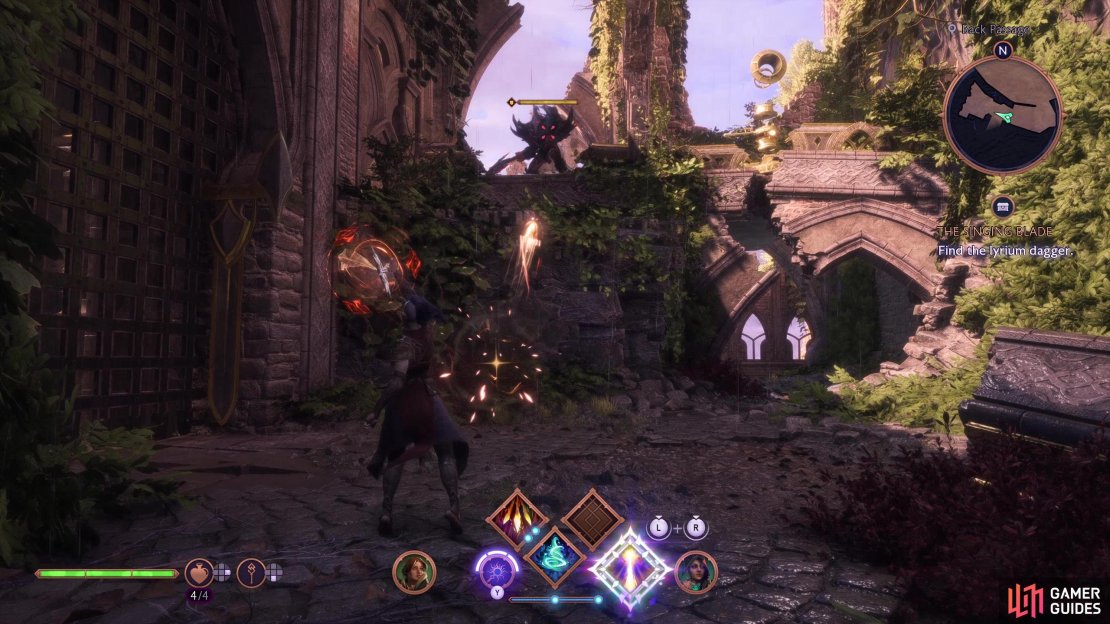



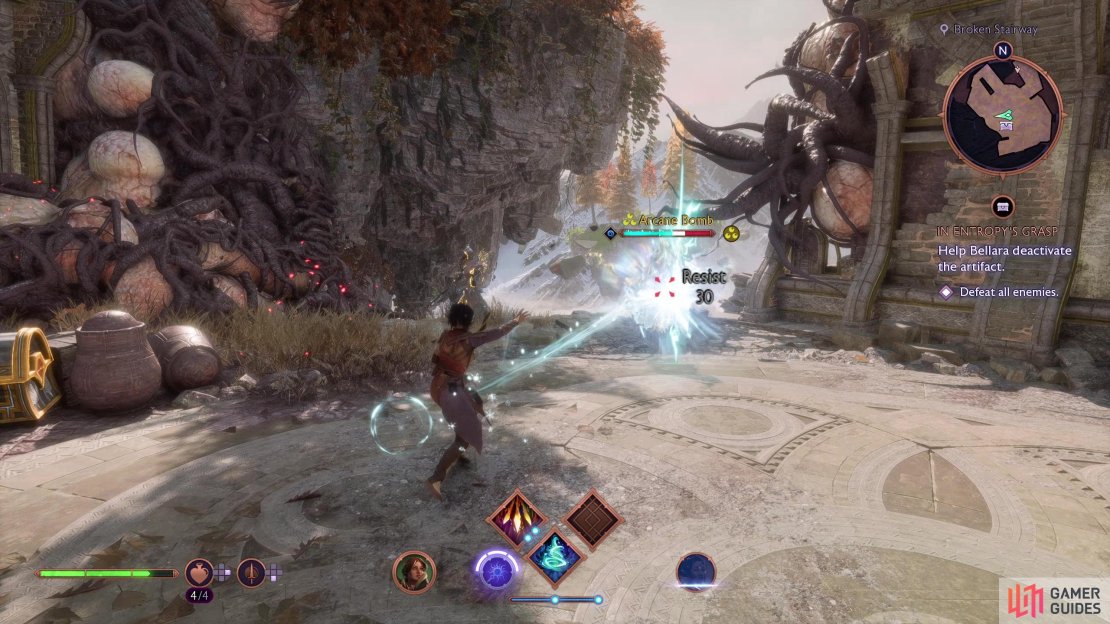



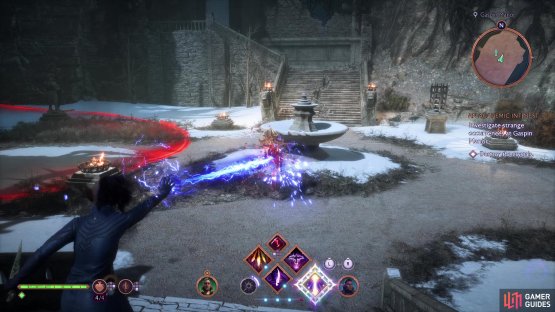



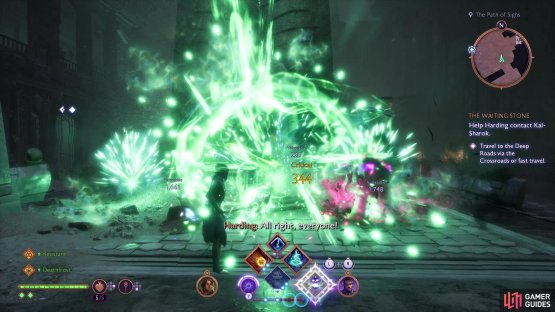



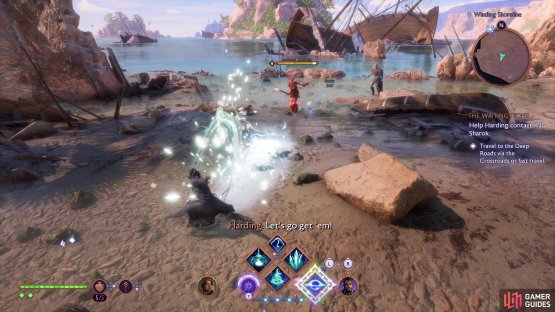



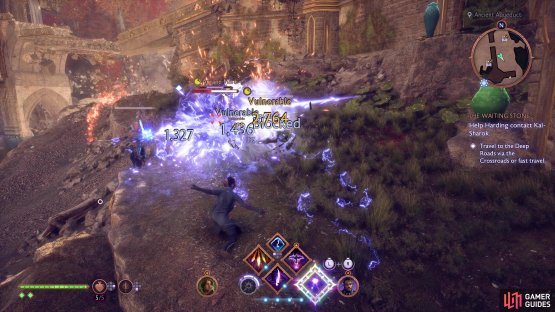

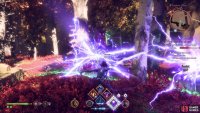

No Comments